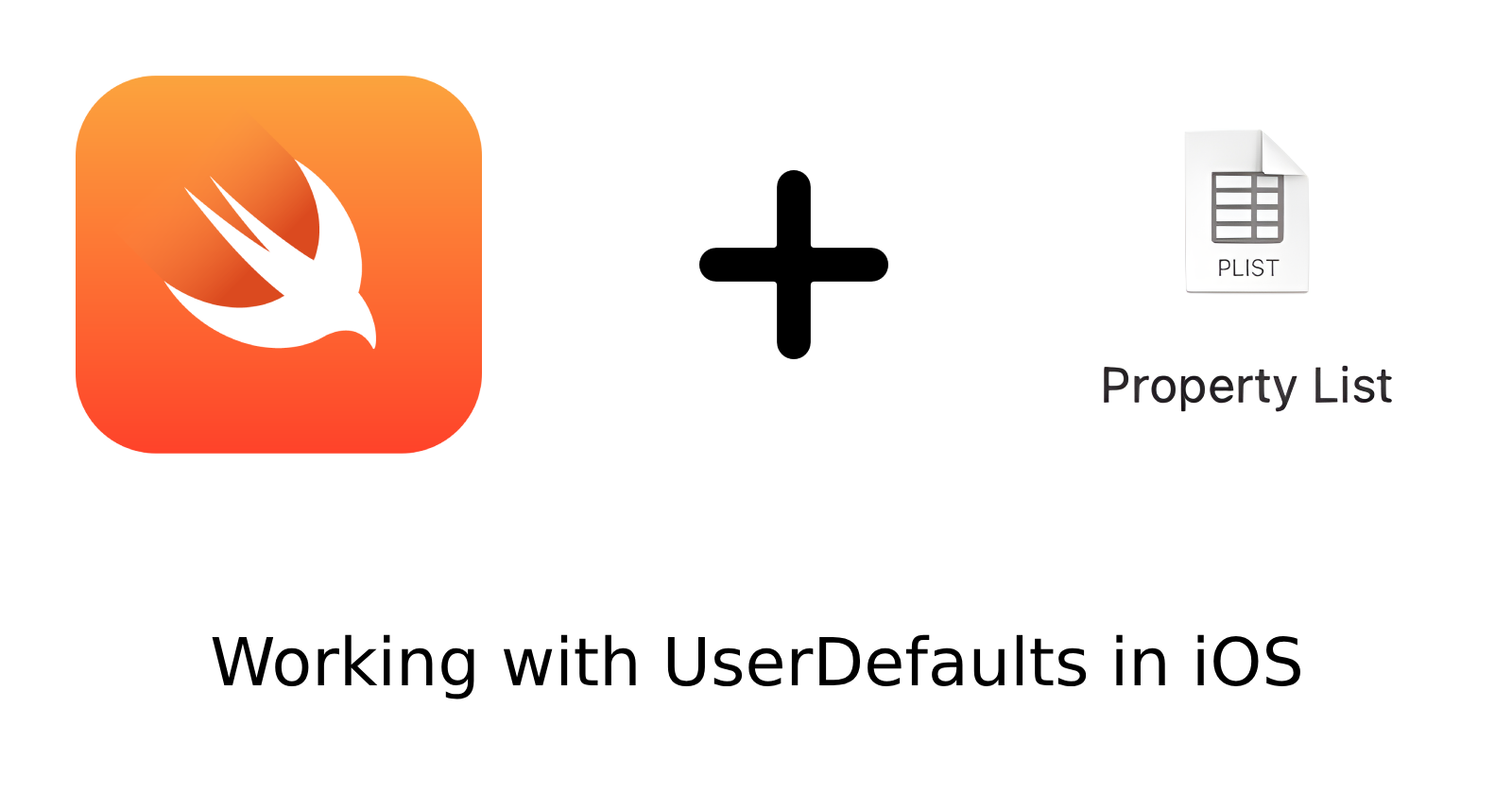Working with UserDefaults in iOS
 Shivam Maggu
Shivam Maggu
Features
The UserDefaults class provides access to the user's defaults database.
It stores data persistently across the app launches as long as the app is installed.
Access to the data is private to the app unless shared through App Groups.
Access to this database is thread-safe.
It is a key-value store that works through a property list (plist) file.
Supported data types include String, Bool, Date, Array, Dictionary, Data and Numbers.
Custom objects can be stored by encoding them as data.
We can use this to store non-sensitive data such as user preferences.
Usage
Utilising the default shared instance of UserDefaults.
import Foundation
// Set a key value in UserDefaults
UserDefaults.standard.set("Shivam", forKey: "firstname")
// Get a key value from User Defaults
UserDefaults.standard.value(forKey: "firstname")
// Empty User Defaults
UserDefaults.standard.removeObject(forKey: "firstname")
Creating a UserDefaults that can be shared with multiple apps and extensions.
import Foundation
// User Defaults with Suite.
// Useful for sharing data with other apps
// or extensions with app groups.
let defaults = UserDefaults(suiteName: "group.com.organisation.appname")!
// Set a key value in User Defaults
defaults.set("Shivam", forKey: "firstname")
// Get a key value from User Defaults
defaults.value(forKey: "firstname")
// Empty User Defaults
defaults.removeObject(forKey: "firstname")
Storing custom objects in UserDefaults.
import Foundation
// Custom model to be stored in UserDefaults
struct Student: Codable {
let firstname: String
let lastname: String
let grade: Int
let subjects: Array<String>
let teachers: [String: String]
let profileImage: Data
let dateModified: Date
}
// Student Object
let student = Student(firstname: "John",
lastname: "Doe",
grade: 2,
subjects: ["Hindi", "English", "Maths"],
teachers: ["Hindi": "Teacher A", "English": "Teacher b", "Maths": "Teacher X"],
profileImage: Data(),
dateModified: Date())
// Encode custom object to data and store it in UserDefaults
let encoder = JSONEncoder()
do {
let data = try encoder.encode(student)
UserDefaults.standard.setValue(data, forKey: "StudentData")
} catch {
throw error
}
// Retrieve data from UserDefaults and decode it to custom object
let decoder = JSONDecoder()
if let data = UserDefaults.standard.value(forKey: "StudentData") as? Data {
do {
let object = try decoder.decode(Student.self, from: data)
print(object)
} catch {
throw error
}
} else {
print("No data in UserDefaults.")
}
Using UserDefaults as a Property Wrapper
Check out this gist to use UserDefaults with Property Wrapper. This is a more generalized way to use in Projects.
Subscribe to my newsletter
Read articles from Shivam Maggu directly inside your inbox. Subscribe to the newsletter, and don't miss out.
Written by

Shivam Maggu
Shivam Maggu
iOS developer specializing in Swift and anything tech that piques my interest.